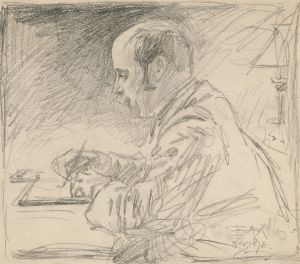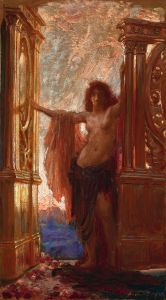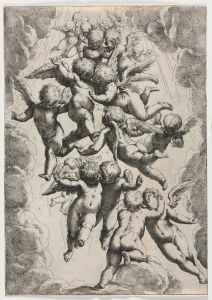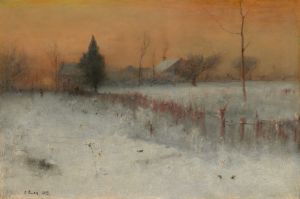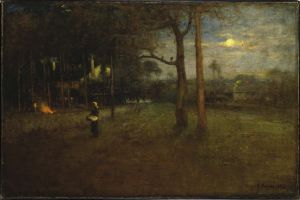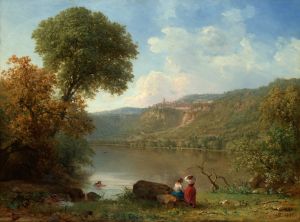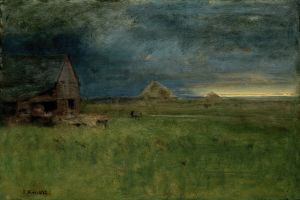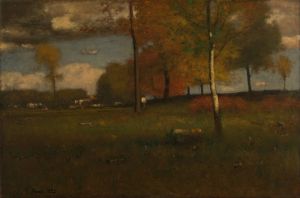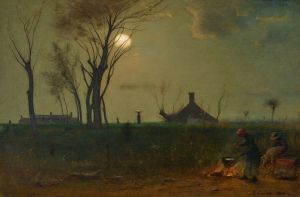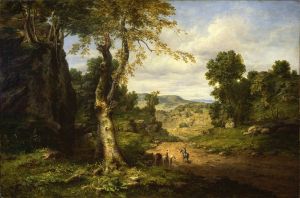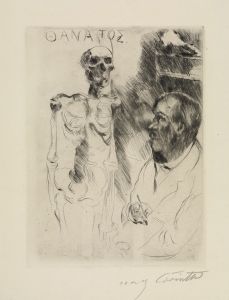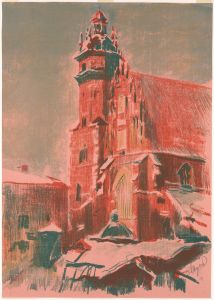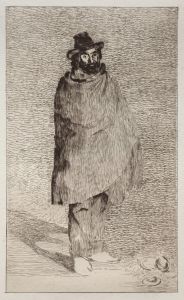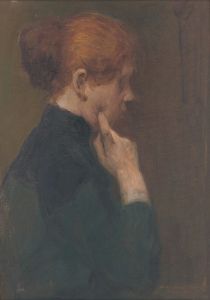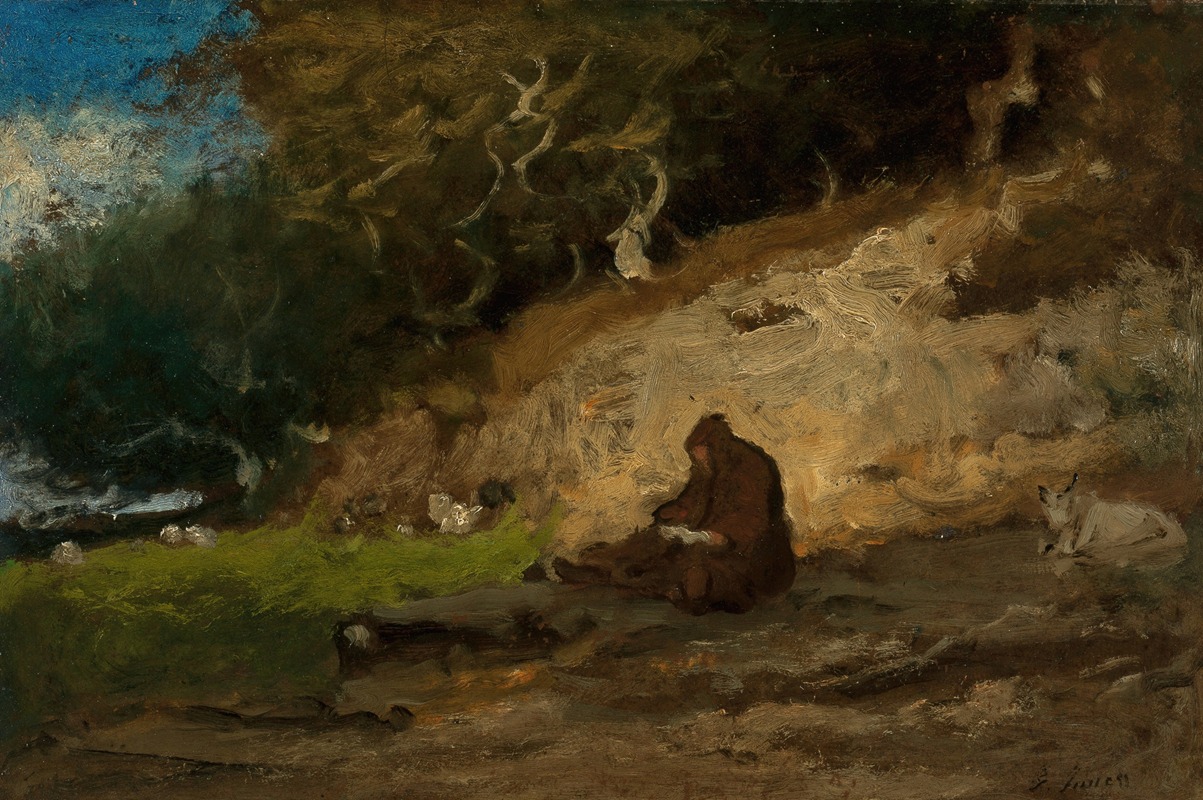
The Hermit
A hand-painted replica of George Inness’s masterpiece The Hermit, meticulously crafted by professional artists to capture the true essence of the original. Each piece is created with museum-quality canvas and rare mineral pigments, carefully painted by experienced artists with delicate brushstrokes and rich, layered colors to perfectly recreate the texture of the original artwork. Unlike machine-printed reproductions, this hand-painted version brings the painting to life, infused with the artist’s emotions and skill in every stroke. Whether for personal collection or home decoration, it instantly elevates the artistic atmosphere of any space.
"The Hermit" is a painting created by the American landscape painter George Inness in 1880. Inness, born in 1825, is considered one of the most influential American artists of the 19th century, known for his evocative and atmospheric landscapes. His work often reflects the influence of the Hudson River School, as well as the Barbizon School of France, which emphasized naturalism and the portrayal of light and atmosphere.
"The Hermit" is a prime example of Inness's mature style, which is characterized by a more expressive and less detailed approach compared to his earlier works. This painting depicts a solitary figure, presumably a hermit, in a tranquil, wooded landscape. The scene is imbued with a sense of peace and introspection, capturing the essence of solitude and communion with nature.
Inness's use of color and light in "The Hermit" is particularly noteworthy. He employs a muted palette dominated by greens and browns, which enhances the serene and contemplative mood of the painting. The soft, diffused light filtering through the trees creates a harmonious and almost spiritual atmosphere, inviting viewers to reflect on the beauty and tranquility of the natural world.
The composition of "The Hermit" is carefully balanced, with the figure of the hermit placed slightly off-center, drawing the viewer's eye into the depths of the forest. The surrounding trees and foliage are rendered with a loose, almost impressionistic brushwork, which adds to the overall sense of harmony and unity in the scene.
Inness was deeply influenced by the philosophical and spiritual ideas of Emanuel Swedenborg, a Swedish scientist, philosopher, and theologian. Swedenborg's writings on the interconnectedness of the natural and spiritual worlds resonated with Inness, and this influence is evident in many of his works, including "The Hermit." The painting can be seen as a visual representation of Swedenborgian principles, emphasizing the spiritual dimension of the natural landscape.
Throughout his career, Inness sought to move beyond the mere representation of nature, aiming instead to convey its deeper, spiritual essence. "The Hermit" exemplifies this approach, as it transcends the literal depiction of a forest scene to evoke a sense of inner peace and contemplation.
Today, "The Hermit" is held in high regard as one of George Inness's significant works. It is part of the collection at the Museum of Fine Arts in Boston, where it continues to be appreciated for its artistic and spiritual qualities. Inness's ability to capture the subtle interplay of light, color, and atmosphere has secured his place as a master of American landscape painting, and "The Hermit" remains a testament to his unique vision and talent.





